After a 10th-place finish last campaign, Girona have enjoyed a fast start to the season, with the club picking up 10 points from a possible 12 and sitting in second place in La Liga above the likes of Barcelona and Atlético Madrid. The club had a relatively busy transfer window, bringing in 10 players, with three of these players brought in on loan.
There has been a balance of bringing in some young talent, such as Eric García and Sávio, and established professionals, such as former Manchester United, Ajax and FC Bayern player Daley Blind. On the exit side of things, Girona have only let go of three players permanently, with the most significant loss being Oriol Romeu, who left for Barcelona.
This tactical analysis will examine how Girona manager Míchel‘s tactics have helped their fast start this campaign, as well as an analysis of elements of their game model that could be improved on.
Girona in the first phase of build-up
When watching Girona, it is clear that the side is slightly more refined in the middle and final third than in the initial third of the pitch. Girona have struggled to play the ball out of the back in a few games this season, particularly in their first game against Real Sociedad. This is due to various reasons due to the team’s structure in the build-up, how the players interact in groups and some individual decisions that put the team under more pressure.
Regarding the structure and positioning, this refers to players being in positions where they can receive the ball relatively comfortably and potentially be able to progress the ball or locate another player that can do so. From Girona’s perspective, the side this season have played with a back three, whether this be with the two centre-backs and the left-back or the two centre-backs and the goalkeeper, but the left-back Miguel Gutiérrez always inverts to form a double-pivot with Aleix García. The wingers in the side then look to take up positions high and wide.
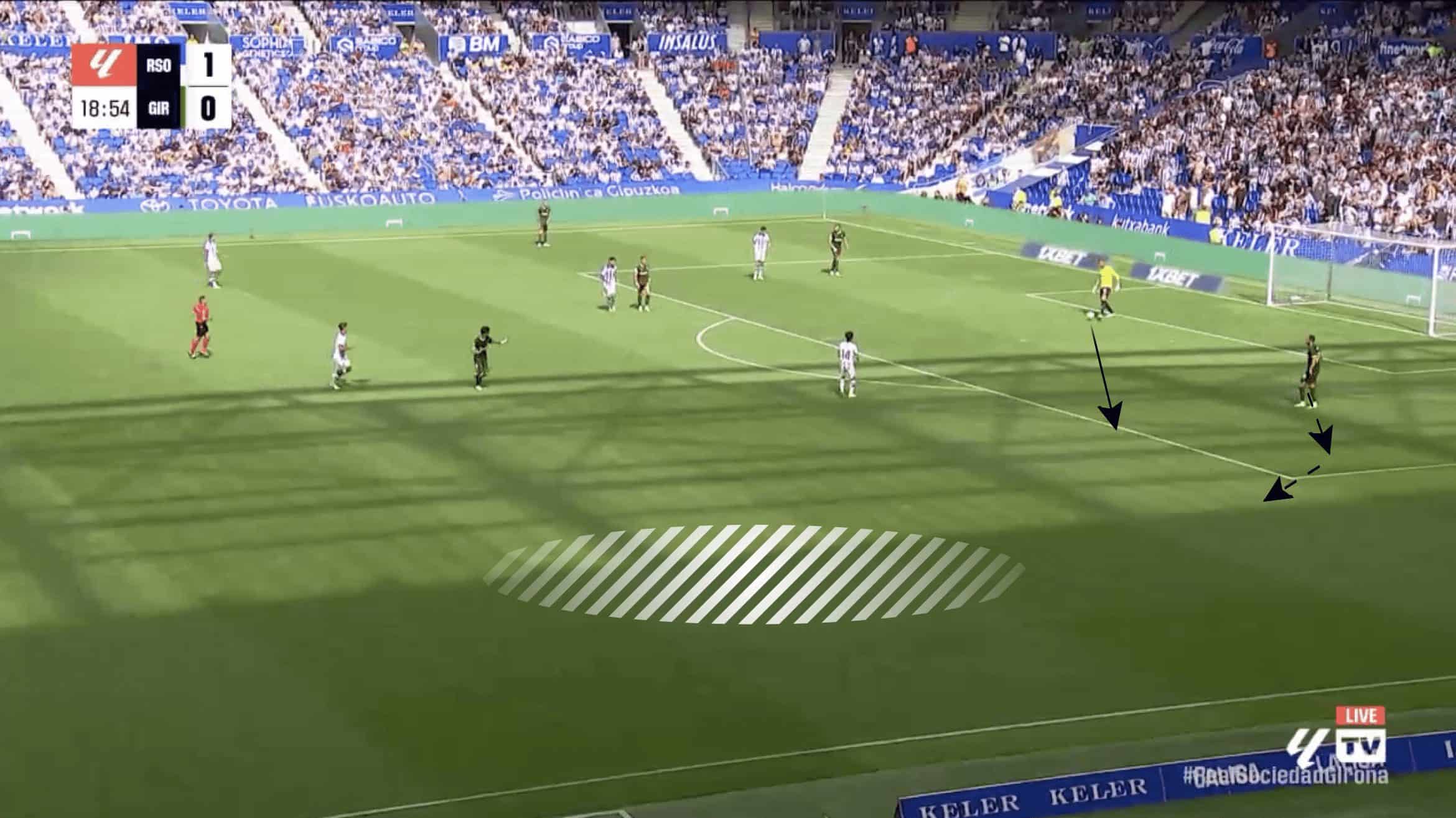
In certain situations, Girona restrict themselves slightly, as seen above, with Daley Blind passing up an opportunity to move slightly towards the left, giving him access to receive the ball and drive into the vacated channel on the left-hand side.
With Gutiérrez inverting further into the pitch and the narrowness of Blind’s position, the side becomes a bit easier to press as the opposition faces no risk of being stretched horizontally.
Another issue with this scenario, in particular, is that with the inverting of Gutiérrez and the fact that the wingers in the side keep high positions, players looking to receive the ball in vacated spaces in the channels will have to run into positions to receive the ball.
Receiving the ball in these circumstances, with the opposition taking on a man-oriented approach, leaves the player receiving the pass in a difficult position, which can be seen in the image below. Yangel Herrera has to run into position facing his own goal, with pressure directly behind him.
However, although this is a difficult position to receive the ball in, it is made even more difficult by the lack of support that the player receiving the ball has, with Gutiérrez missing an opportunity to curve his run slightly and support the player receiving it.
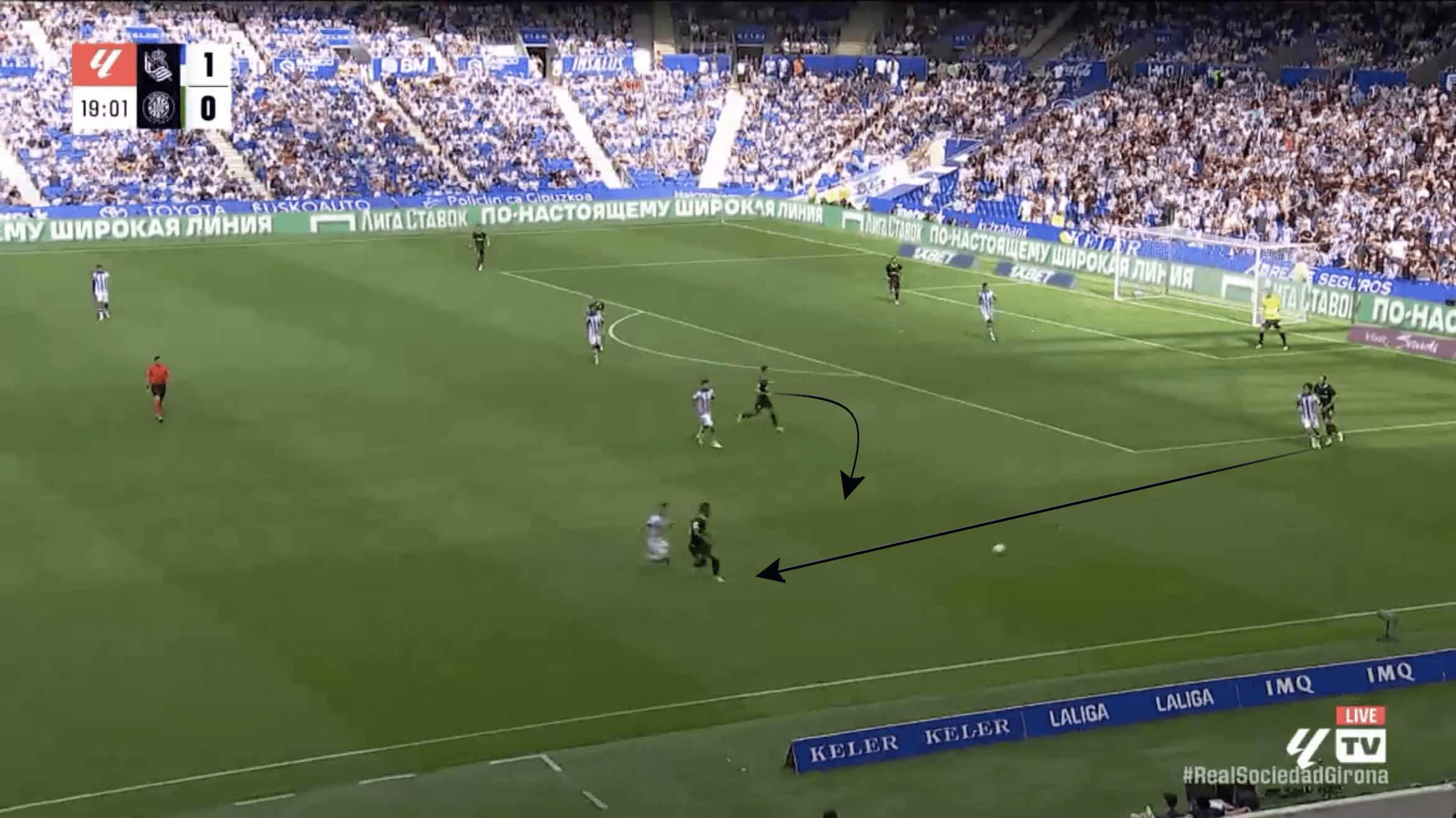
In their most recent game against Las Palmas, we can see how the side have progressed in regard to finding solutions in the first phase of build-up. In the example below, compared to their first game against Real Sociedad, rather than one of the full-backs inverting immediately, the side started off with a back 4 with their full-backs in the wide areas and the midfielder Iván Martín dropping deeper to form a double pivot with García.
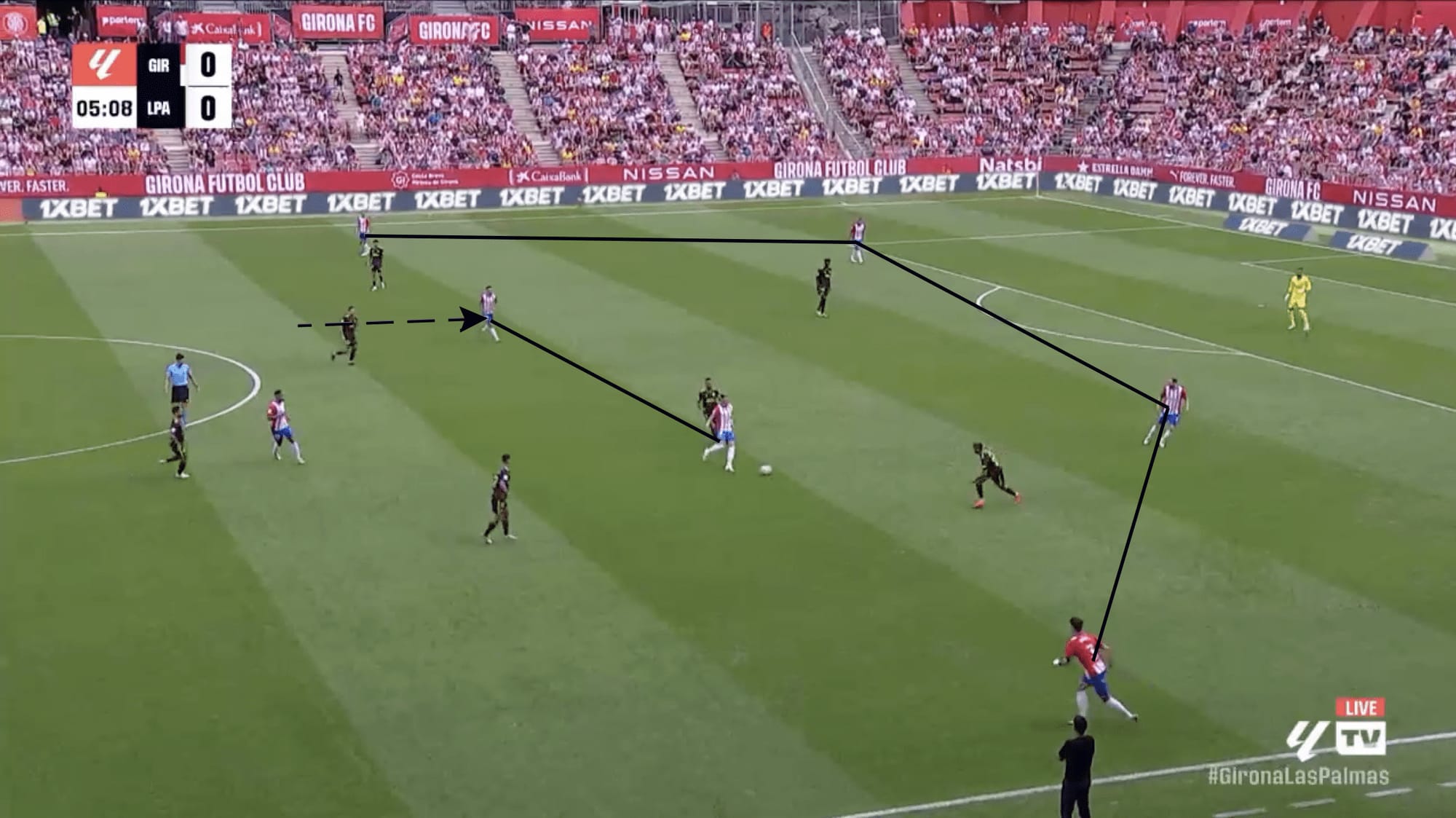
Martín then begins to drop deeper in order to offer support to Blind, with the opposition defender following the midfielder, which creates space in the centre of the field and the right-back Arnau Martínez begins to invert his position, allowing him to receive the ball and progress the ball even further.
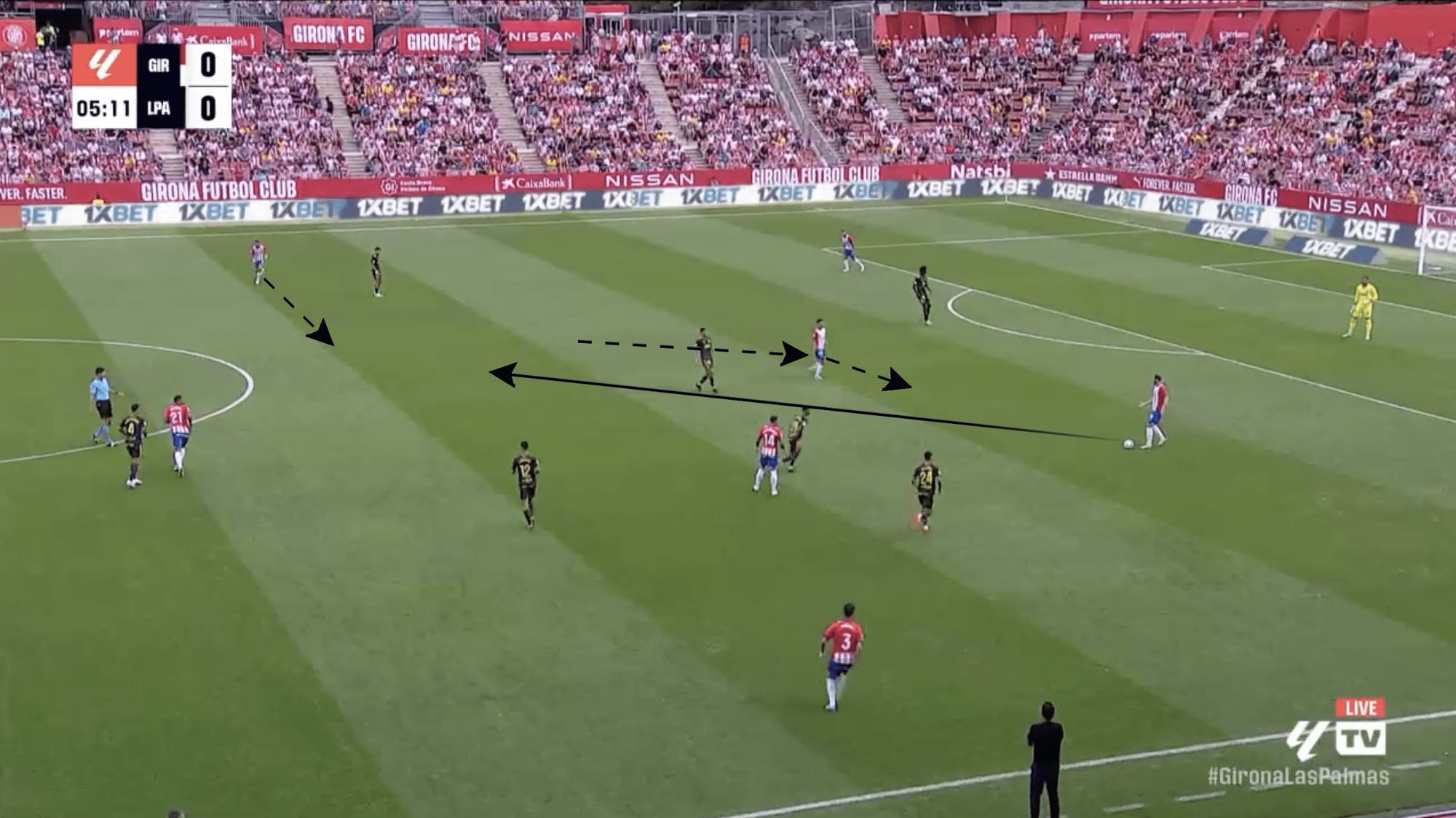
In addition to this, García has also started dropping in between the two centre-backs in order to form a back 3, with Daley Blind shifting towards the wide areas with Guitérrez shifting into the midfield. This can be seen in the image below, with Martín and Guitérrez in the midfield and Blind in the wide area. As a result, the side can play the ball quicker to the wide areas as they do not have to wait for someone to run into and occupy the space.
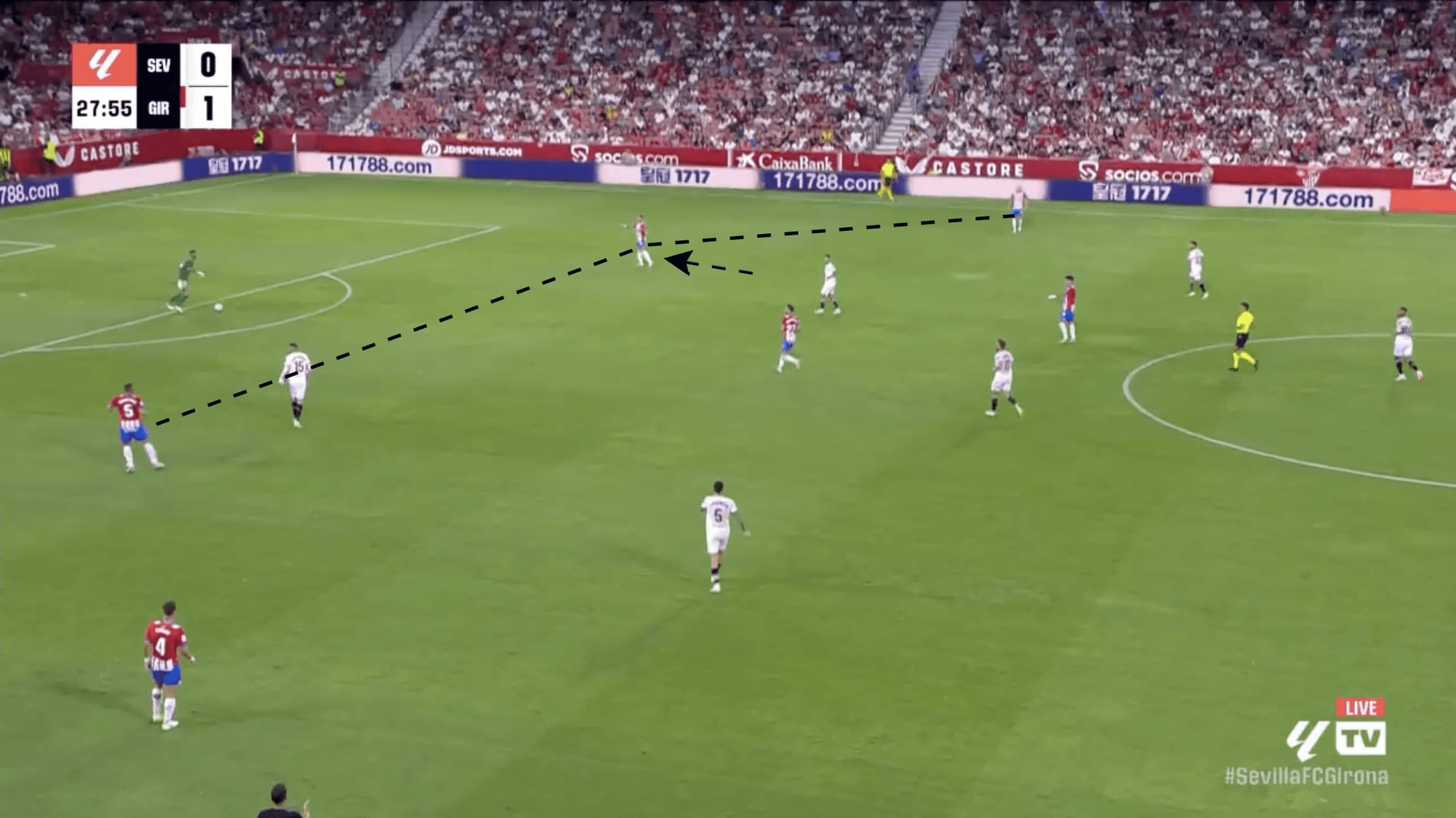
Overall, as the season has progressed, Girona have looked to try and progress the ball forward through the wide areas, or like they did against Las Palmas, the full-backs will look to move into spaces that the central midfielders have vacated.
At certain points of the season, however, the side have struggled to consistently take advantage of situations where they have overloads in the initial third.
Generally, the sides move into spaces and positions, allowing them to play around the opposition. However, there seems to be a lack of awareness in regard to playing the ball into freer spaces that would enable them to play out of pressure.
This can be seen in the example below, with Girona enjoying a 4v3 advantage over the opposition in their own third. In this scenario, although two of Yan Couto’s teammates are marked, he can play the ball back to Blind, who can potentially access the far side. However, Couto looks to play a relatively blind pass further forward and loses possession.
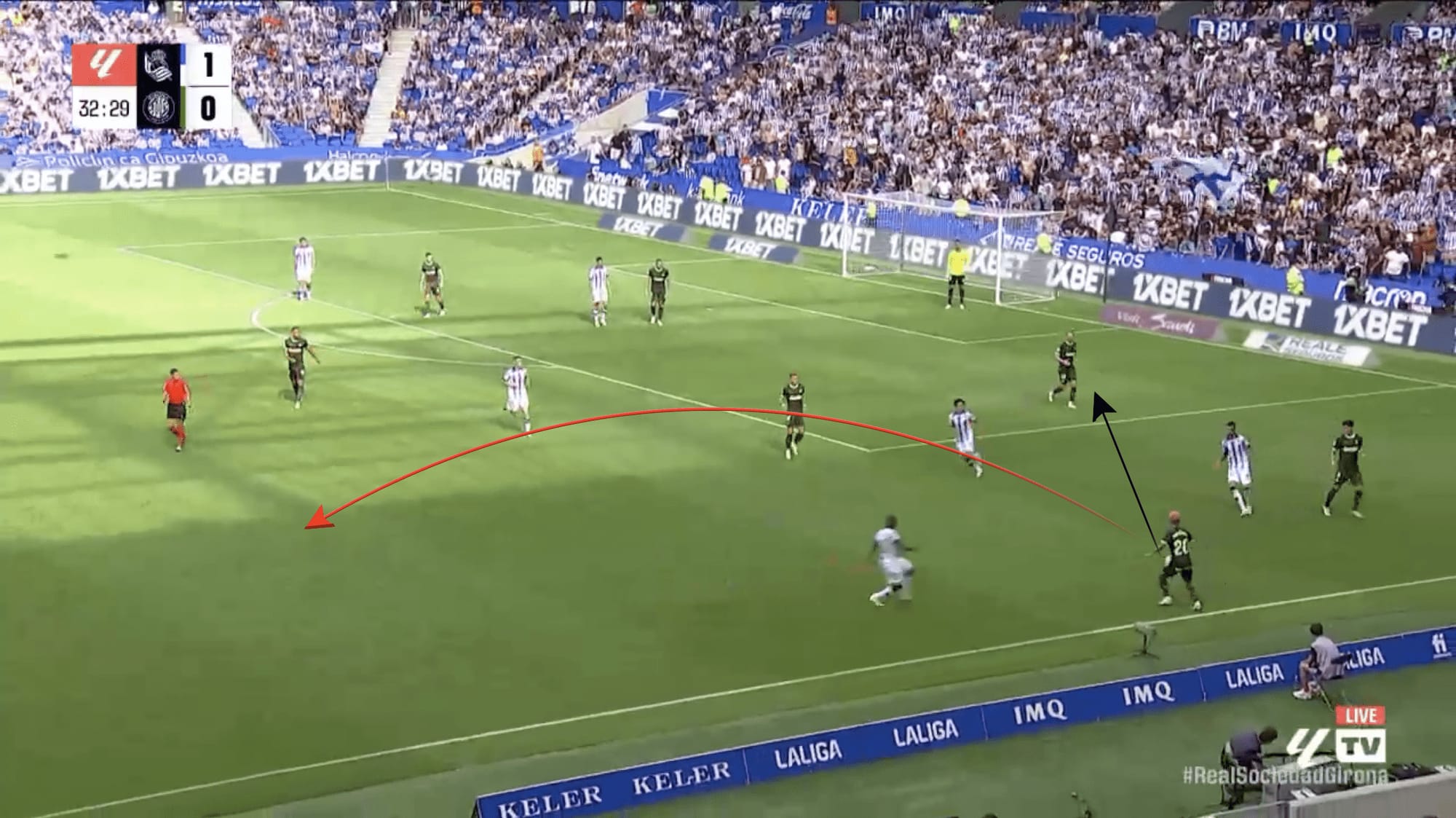
Girona, at times, try to force progression through the wide areas rather than play lateral and backward passes that can allow them to bypass opposition pressure. The image below shows this example, with Blind in possession on the left-hand side.
Although this is not the first build-up phase, it provides an example of Girona forcing progression down the wide areas. Here, Girona find themselves in a 3v3 with the Girona players able to create an excellent shape that gives them good support angles.
However, in this situation, the opposition players are closely positioned to the Girona players, and this, added with the constraint of the touchline, would mean that progressing the ball through the left-hand side becomes increasingly tricky. Girona have good angles of support but little space. But because of the movement towards the wide area, Gutiérrez manages to drag an opponent out of position. Here, Blind misses an opportunity to play the ball back into the centre to Martín, who could exploit this.
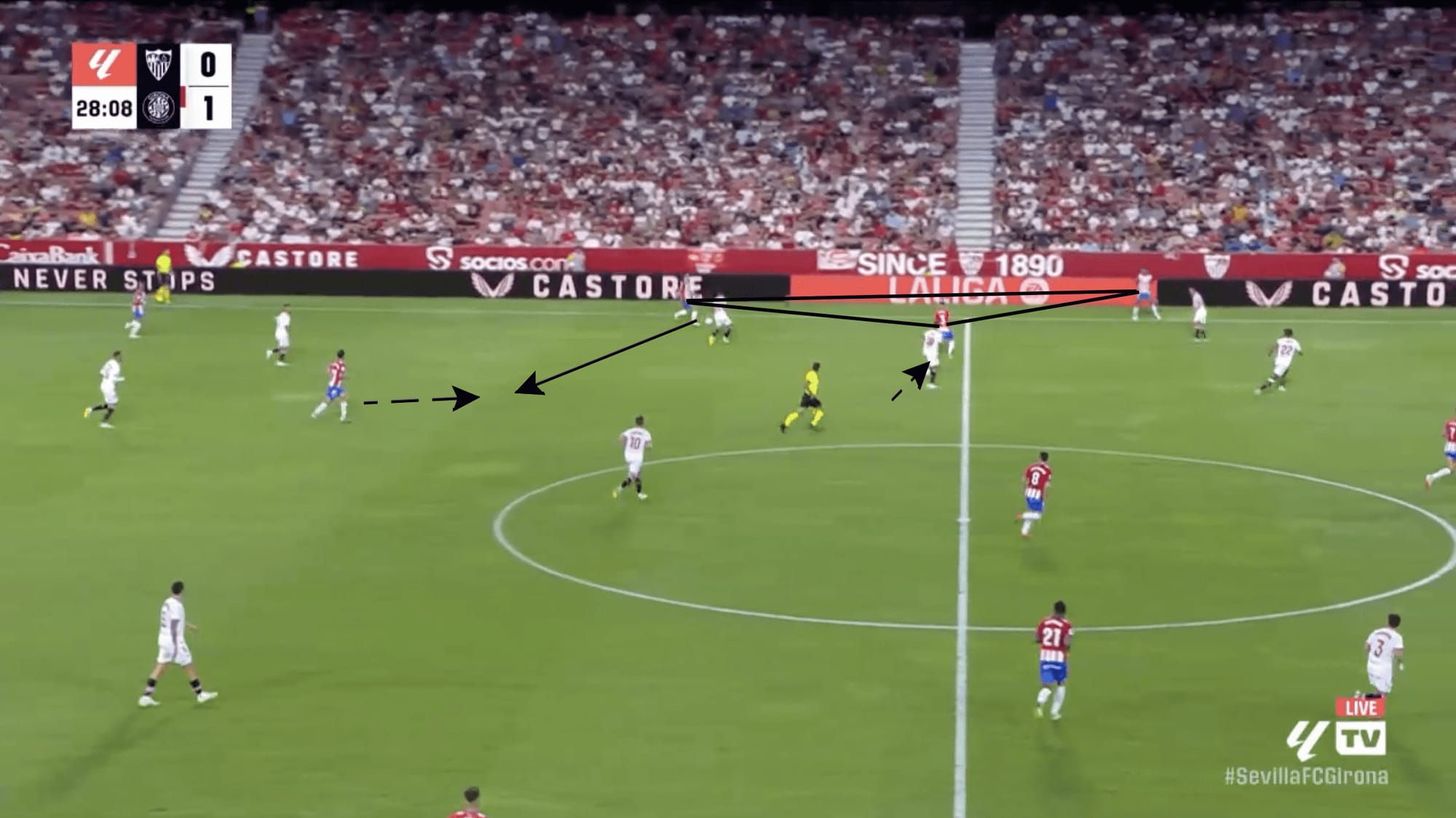
Generally, the side are able to progress the ball well in wide areas due to good movement into areas that allow them to access one another and when there is ample space to do so. However, the side could improve on recognising when there is minimal space in the wider areas and abundant space elsewhere.
This piece has already touched on some individual aspects that hamper the fluidity and speed of build-up, with players having to run into positions to receive the ball rather than arriving before the pass is played. In addition to this, there are a few body orientation issues when players in the back line look to receive the ball.
Players can regularly be seen running towards their own goal when giving their teammates a passing option rather than back peddling into these positions.
In this case, García plays a pass to Blind, who begins to run towards his own goal instead of back peddling, and as a result, the goalkeeper is forced to hold onto the ball for longer because Blind is not in a position to receive the ball.
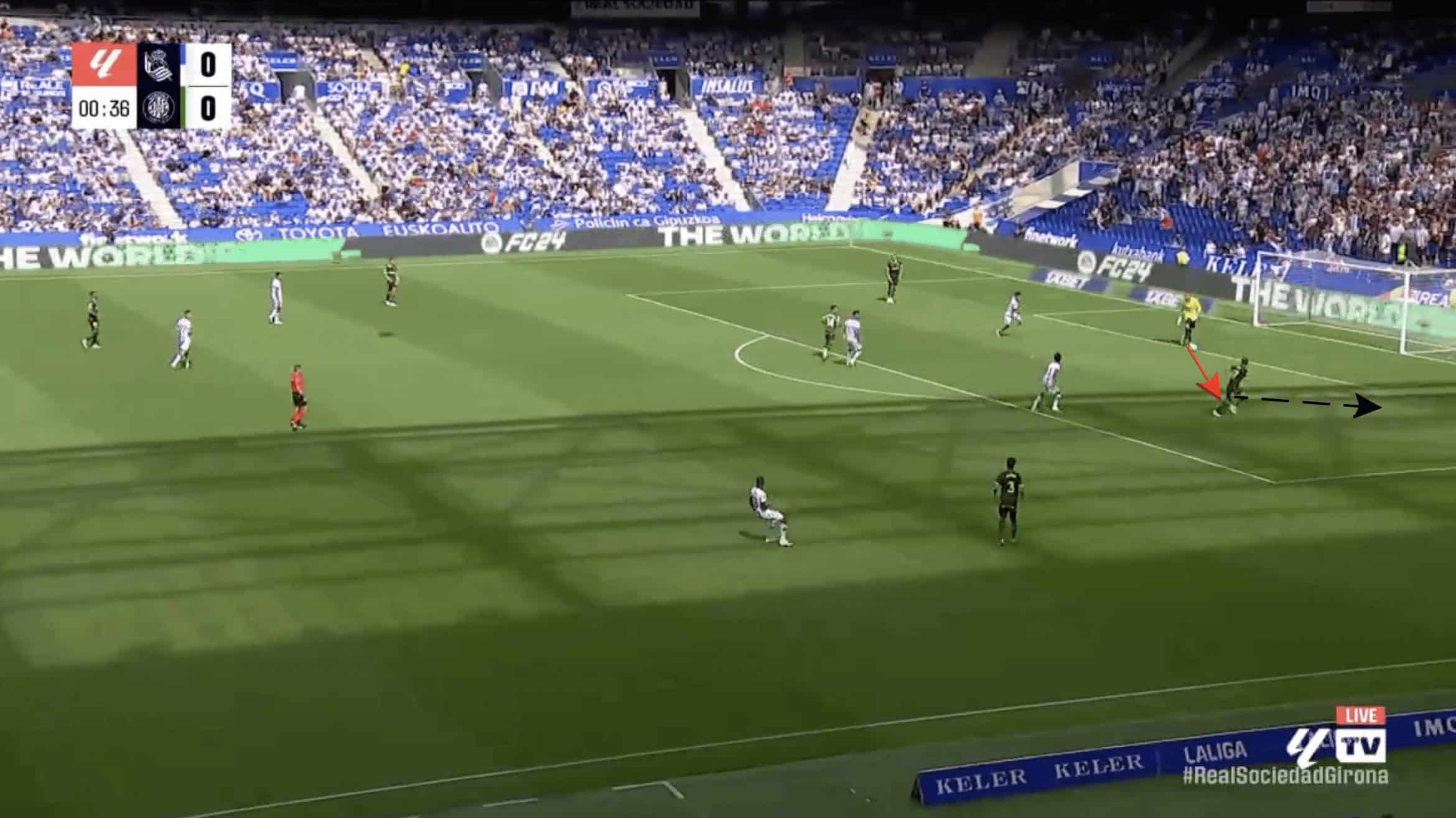
A tiny detail can give the side significant advantages, with back peddling allowing Blind to take a positive touch and either drive forward himself or play the ball.
In the image below, another example of Blind running backwards to receive the ball can be seen. Like the previous example, Paulo Gazzaniga cannot play the ball to Blind as it would put him in a difficult position, with the opposition likely to press the centre-back due to the sub-optimal position he would receive the ball in. Girona then missed an opportunity to play the ball into space on the opposite side.
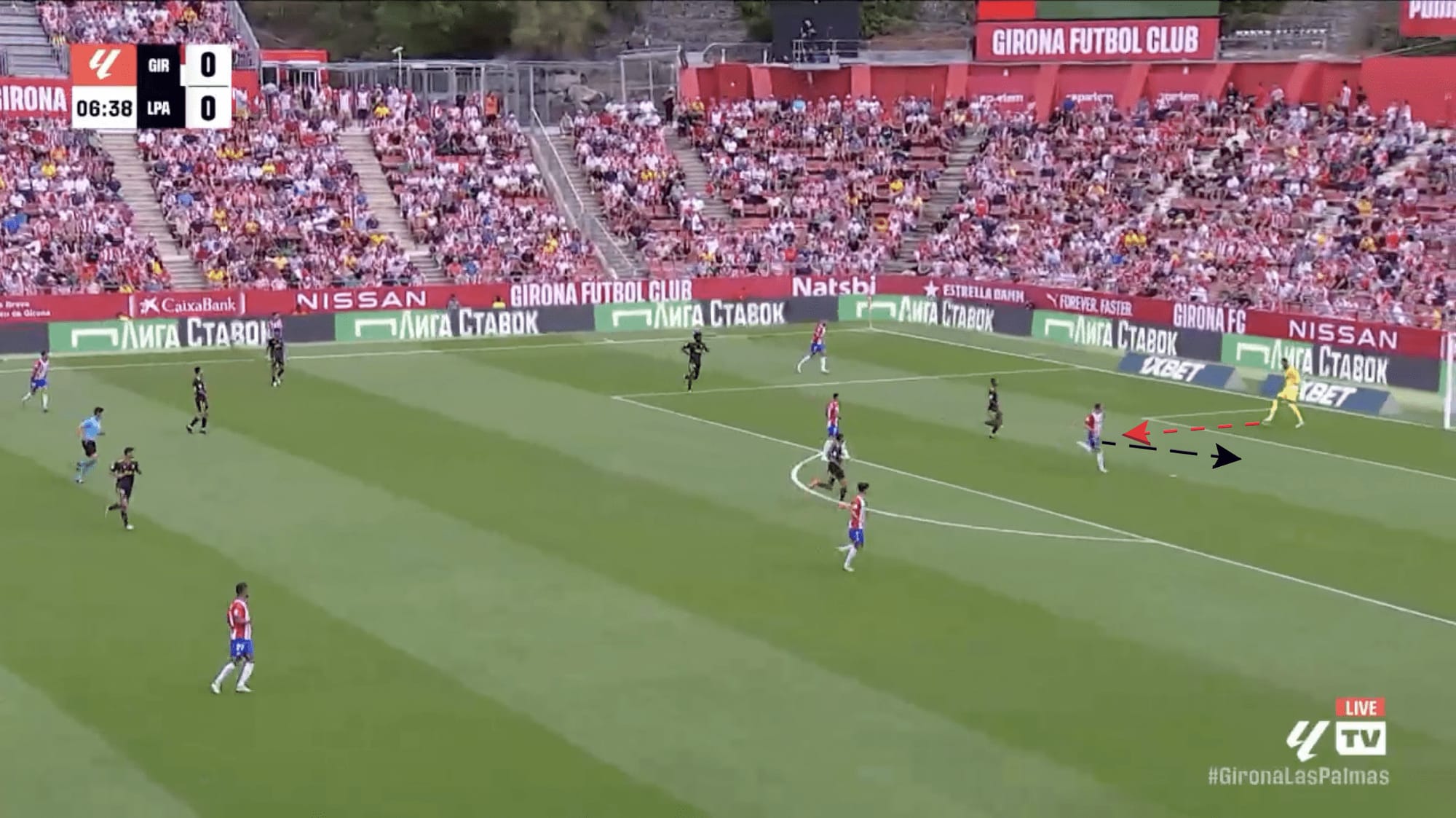
Girona in the middle and final third.
Girona are not necessarily geared towards having their midfielders occupy spaces in the middle third of the pitch, with García usually the only midfielder in this space. Two of the three midfielders in the side look to advance to the last line of the defence, creating an attacking five and, in some cases, an attacking 6 with Gutierrez moving to the last line.
The image below shows an example of this. What can also be seen is how, at times, due to most of the midfielders advancing, there is no support horizontally for the winger on the ball, forcing the winger to play backwards.
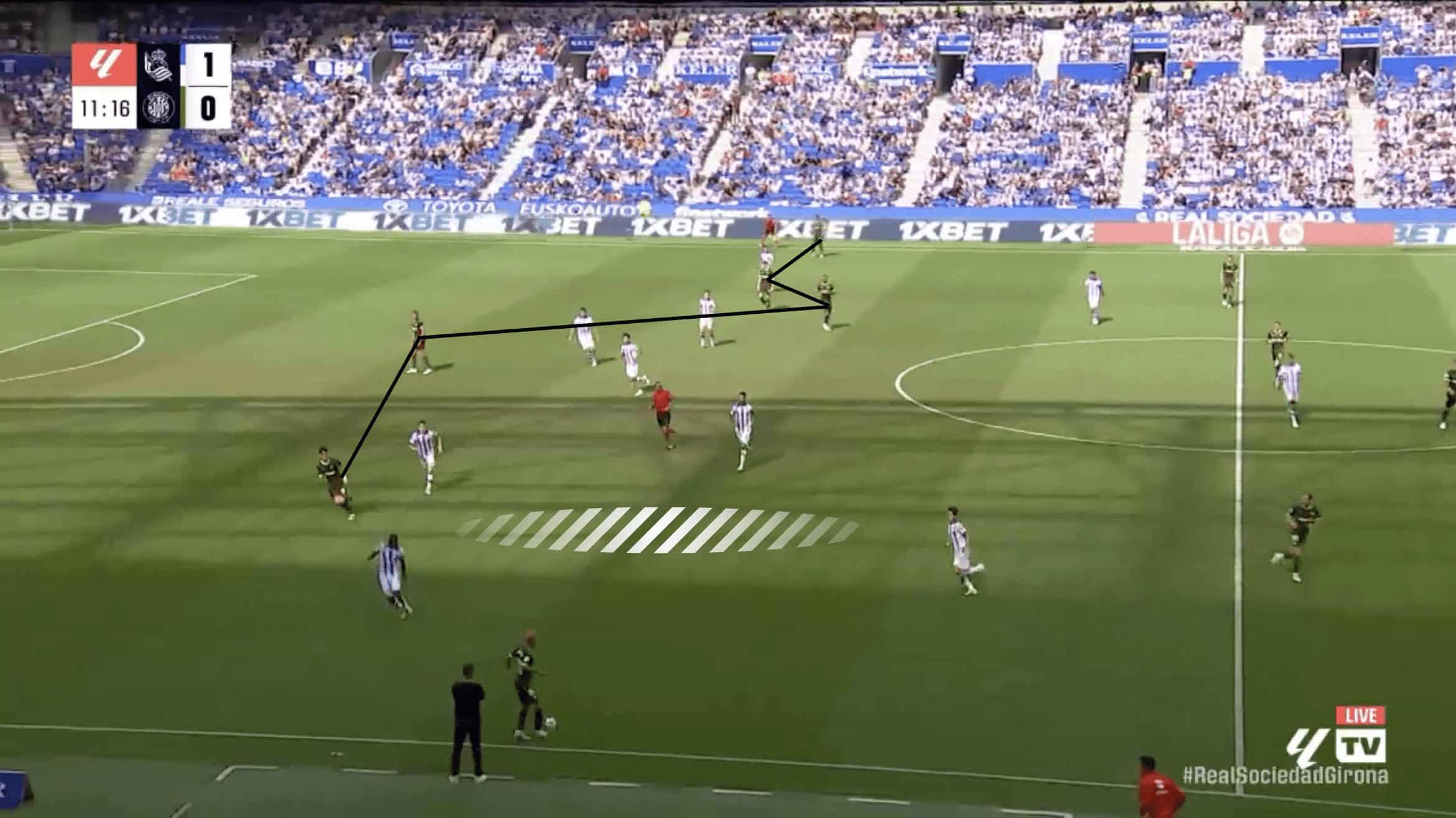
Nevertheless, Girona’s players in the last line of the attack are particularly adept at reducing the compactness of the back line and moving into spaces vacated by the opposition. In this instance, Martínez moves inwards slightly to receive the ball from the centre-back.
As mentioned in the piece, Girona can move well into spaces that allow them to support one another. After receiving the ball, Martínez begins to drive forward, which forces the opposition defender to jump out of the back line. Martín, the midfielder, starts to run on into the space left by the defender and receive the ball.
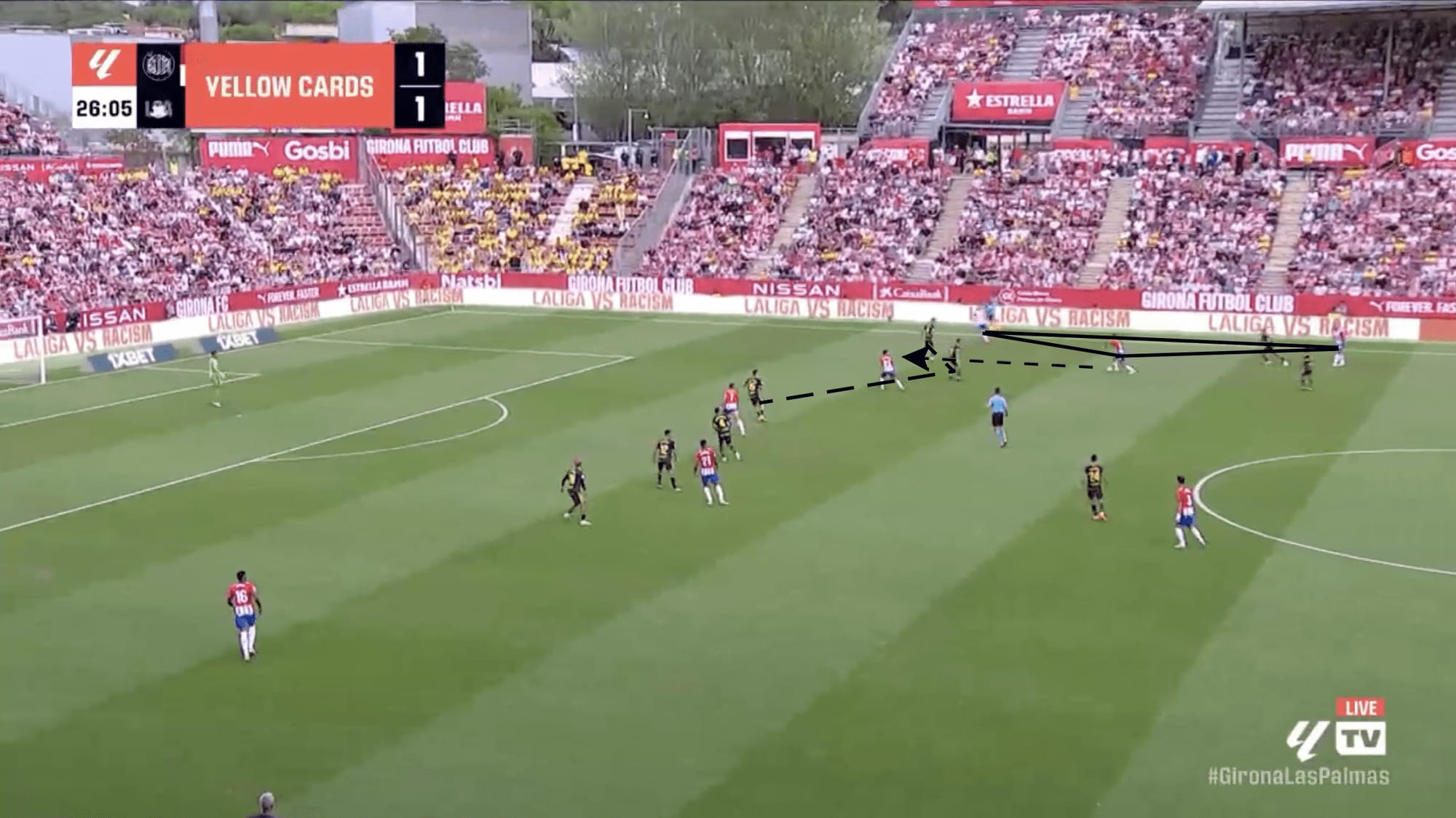
In the game against Sevilla, the same method could be seen. In this scenario, Viktor Tsygankov receives the ball on the wing, forcing the opposition left-back to press the winger. As a result, Herrera looks to advance into the space between the opposing players. Here, once again, we see how Girona move well to provide good angles of support and recognition of where cover has been reduced.
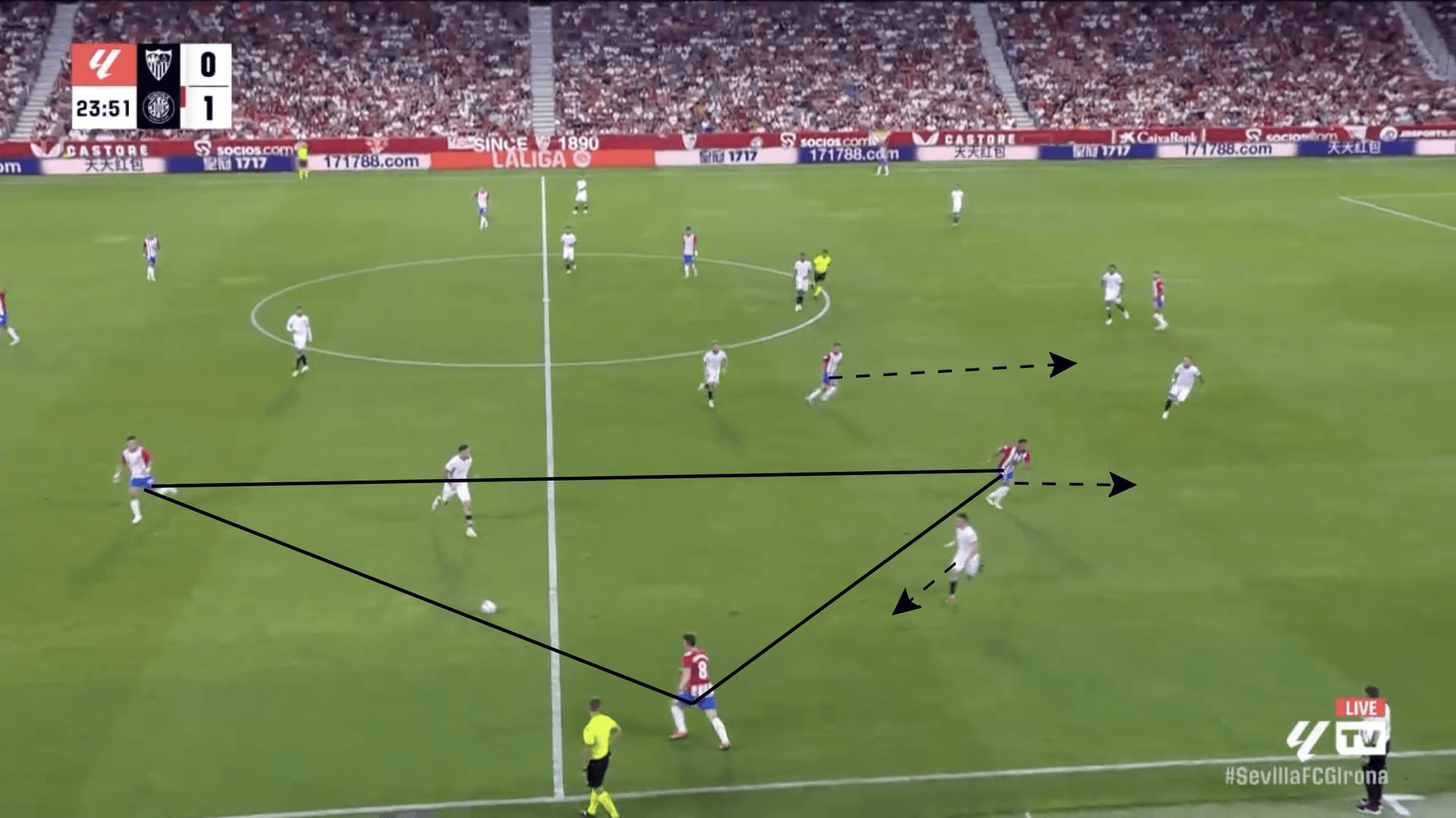
Tsygankov would then return the ball from Herrera before playing a pass to the striker.
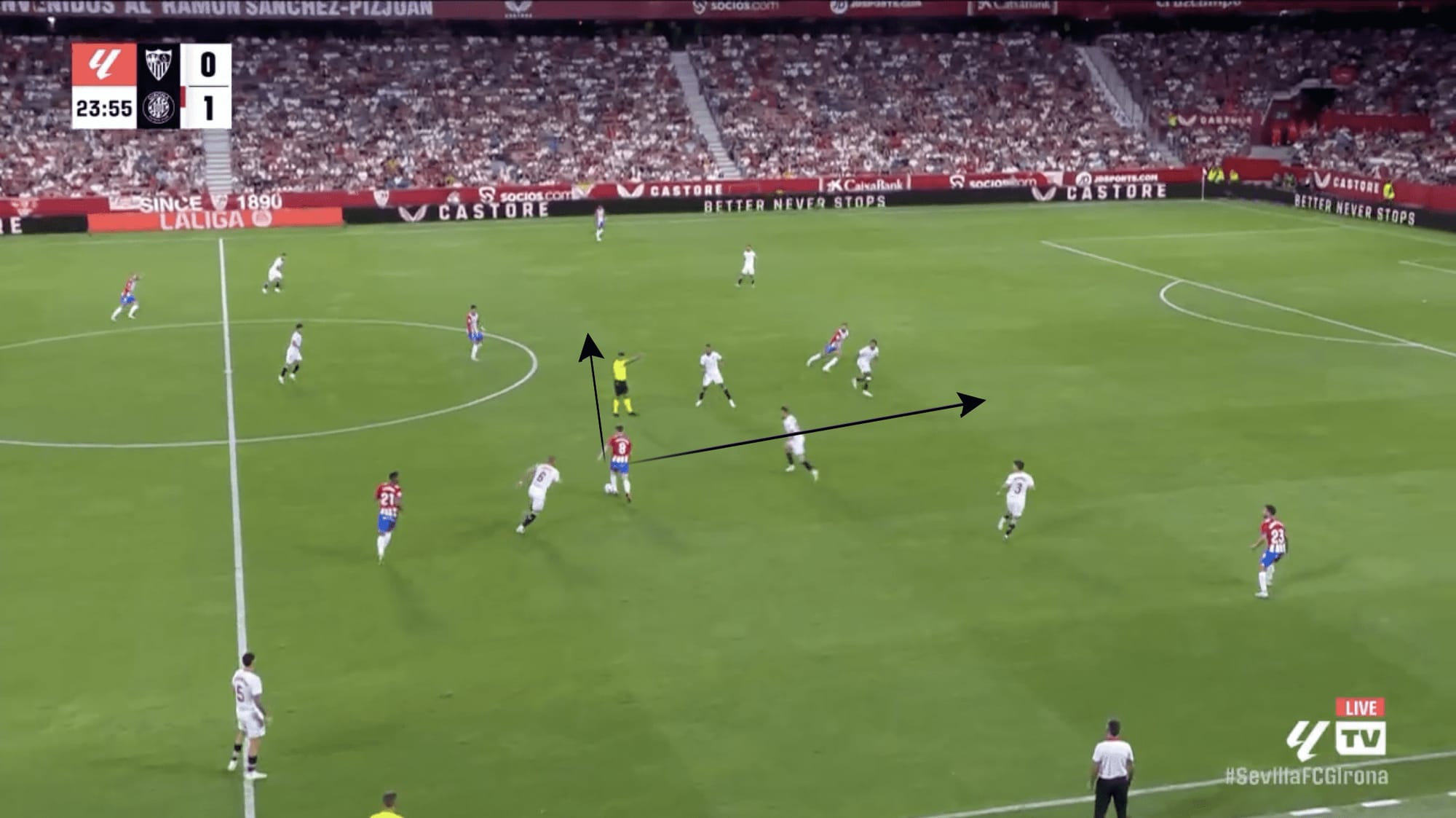
From these wide positions, as shown by previous examples, Girona looks to complete overlaps and underlaps to work into situations where they can play cutbacks. If this option is unavailable, Girona’s wide players will either look to play crosses directly or drive inwards to provoke opposing players into stepping out from their line.
Girona Defensively
Girona have only conceded two goals this season. However, Xg suggests this number should be closer to 5. Generally, the side are capable of pressing the opposition relatively aggressively, forcing them into situations where they have to play long balls, with the side pressing in a 4-4-2, with their two forwards aggressive in closing opposition players down.
This can be seen in the image below, with Martín closing down the goalkeeper and García advancing slightly to cover the opposition defensive midfielder.
This worked well at times in their games against Las Palmas and Real Sociedad, with the side able to maintain good compactness vertically and horizontally and shift across and defend switches of play in these particular matches.
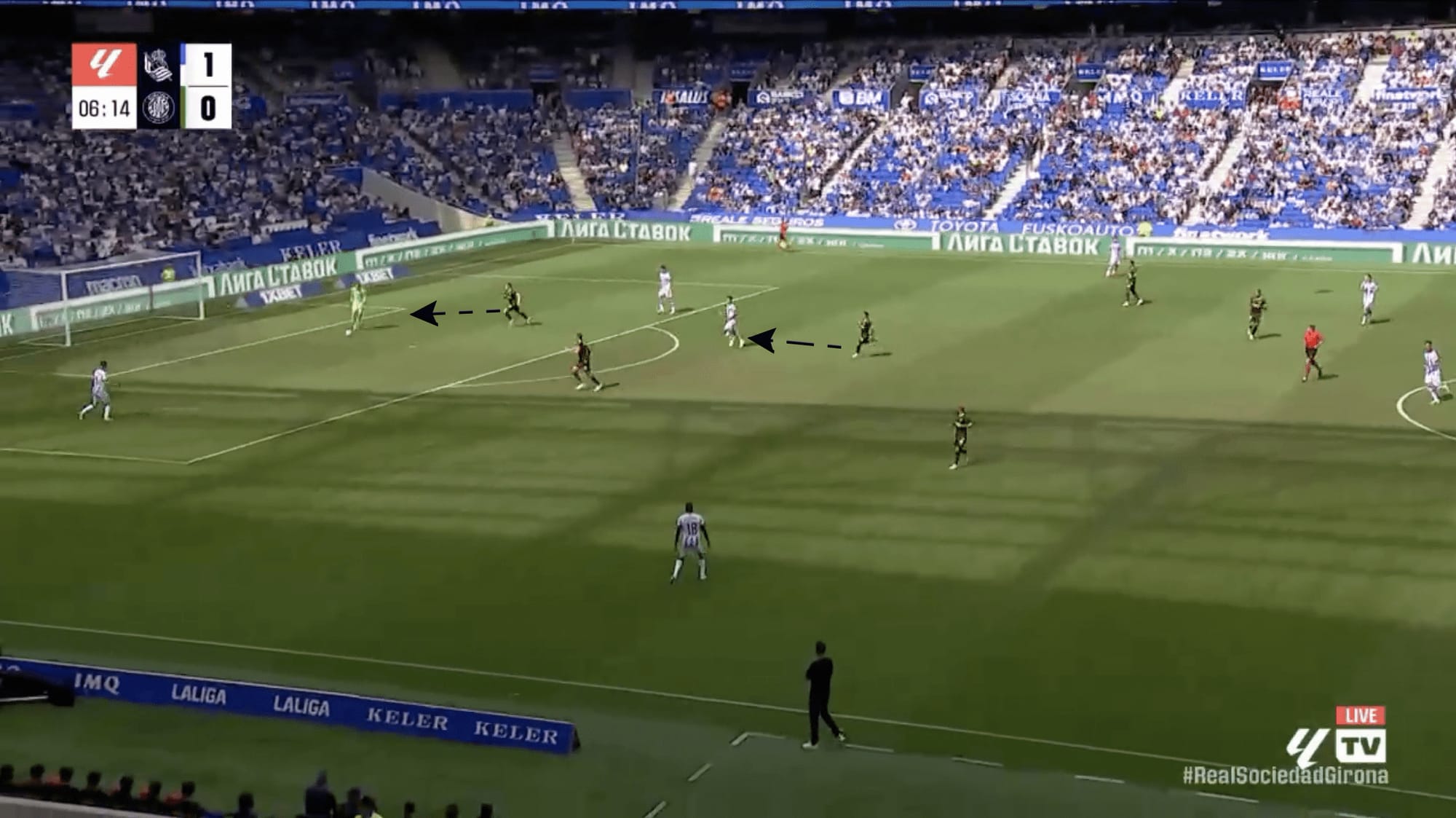
Their game against Sevilla presented them with some different challenges. In this particular game, Griona suffered due to several reasons. The first was the distance between the first and second line, which occurred due to Sevilla having three players in the central areas of the pitch, which overloaded their two central midfielders.
As seen below, one of Sevilla’s players advanced slightly and was able to manipulate the positions of the two central midfielders as a result.
Unlike the game against Real Sociedad, Girona were now faced with two central midfielders behind the first line of defence, with their strikers still looking to press aggressively but not in ways that prevented passes to players behind them.
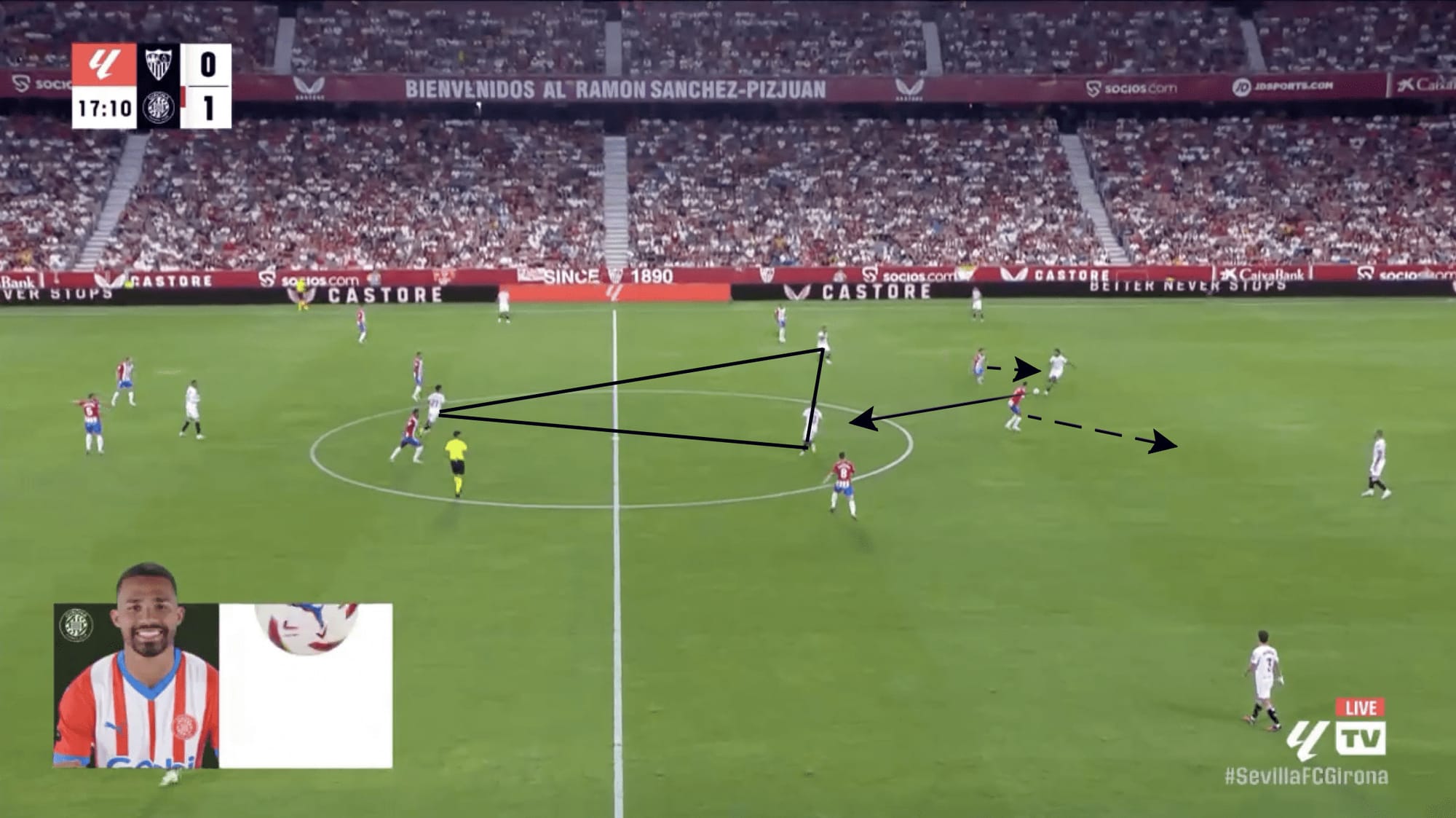
Sevilla’s midfielders could position themselves in different variations that allowed them to pin back Girona’s second line and create space in the centre of the pitch. Sevilla were able to take advantage of Girona’s man-oriented (bordering on man-marking) approach. In the example below, the opposing midfielder begins to advance, and Herrera starts to follow. As a result, the distance between the first and second line increases.
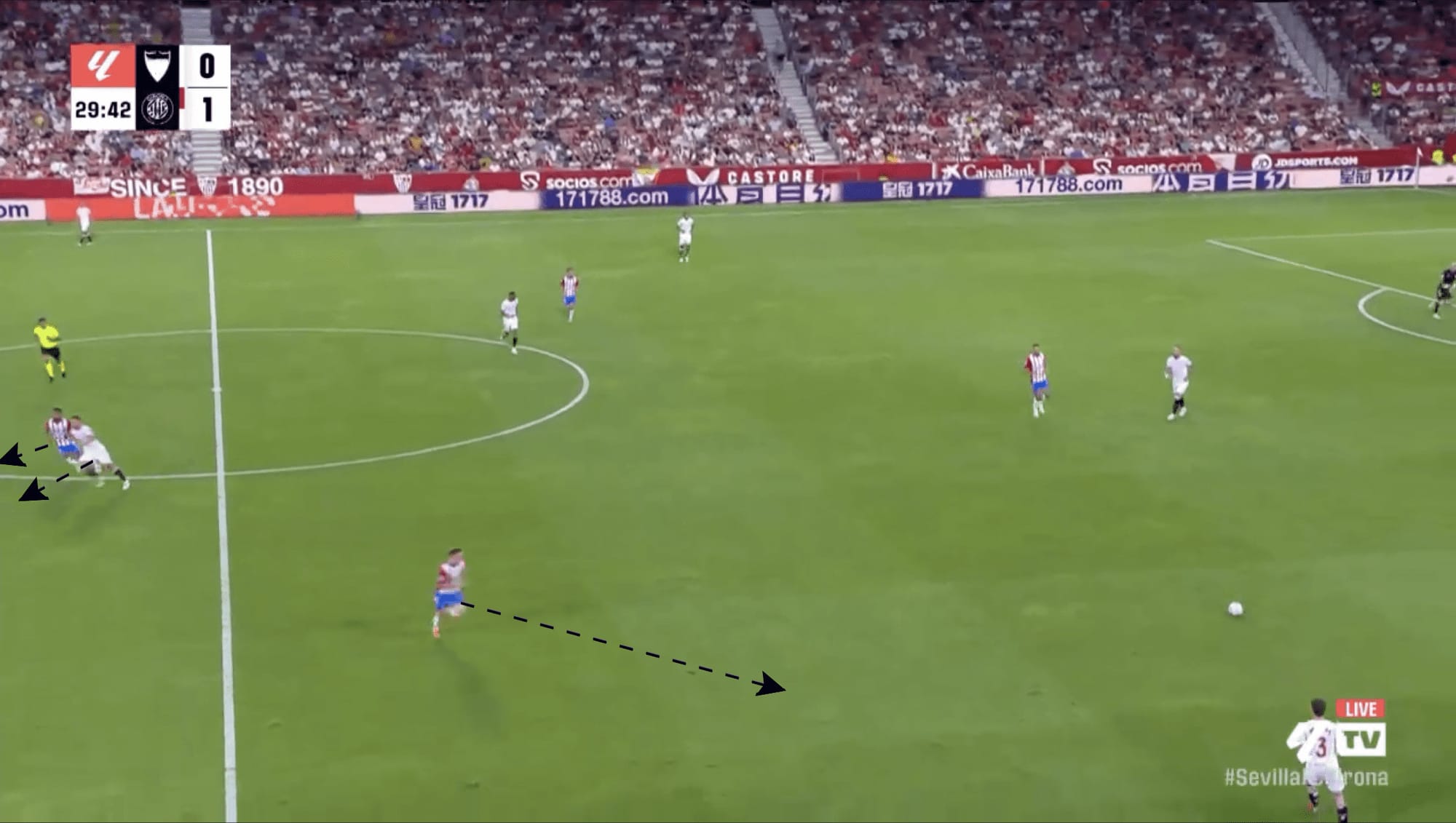
This created spaces in the centre that Sevilla could run into and exploit.
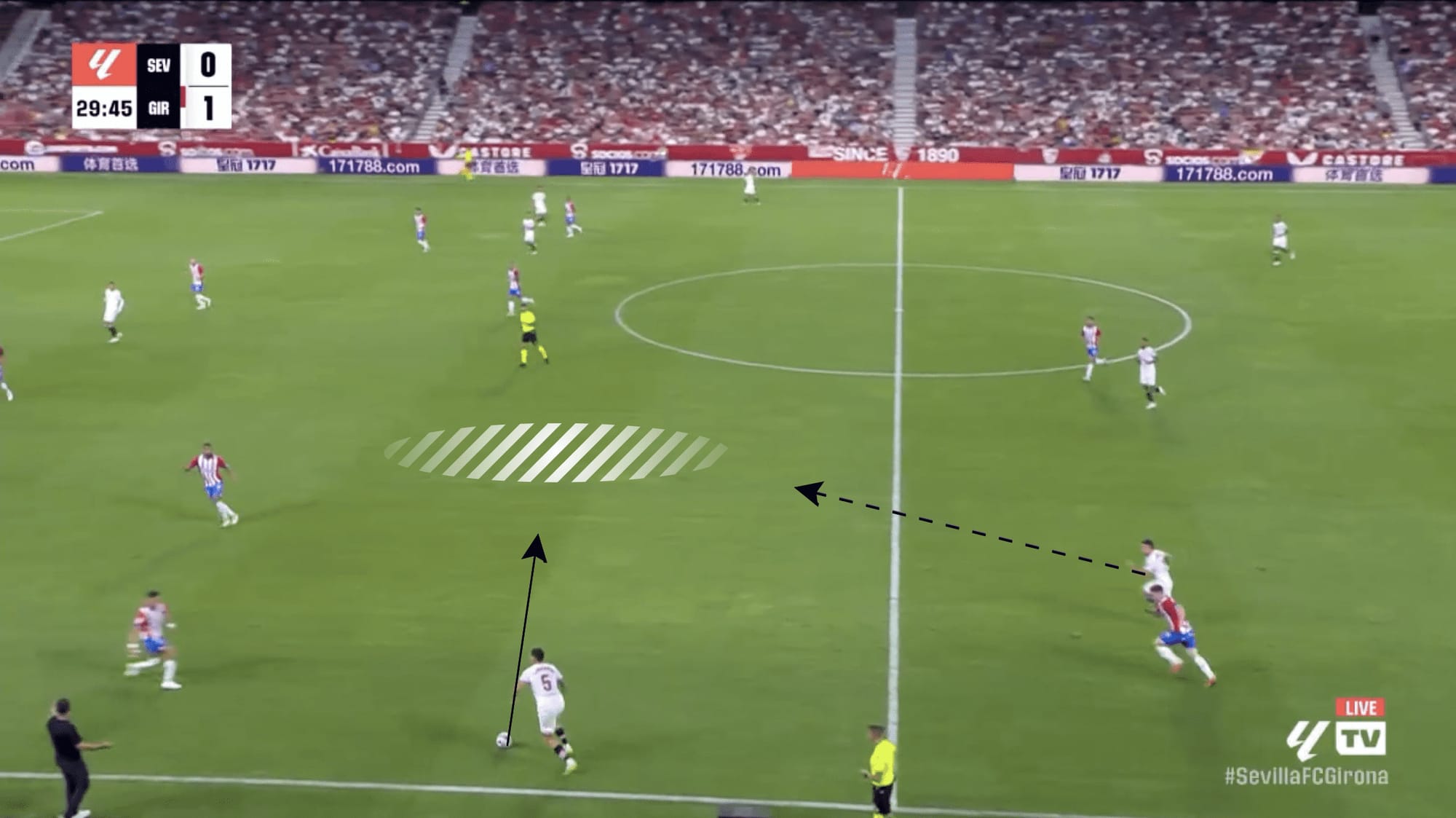
Due to these issues, Girona’s midfielders are sometimes pulled out of position, leaving the side vulnerable in the centre of the pitch. As seen in the visualisation below, most of Girona’s defensive actions this season have occurred in central areas in the final third.
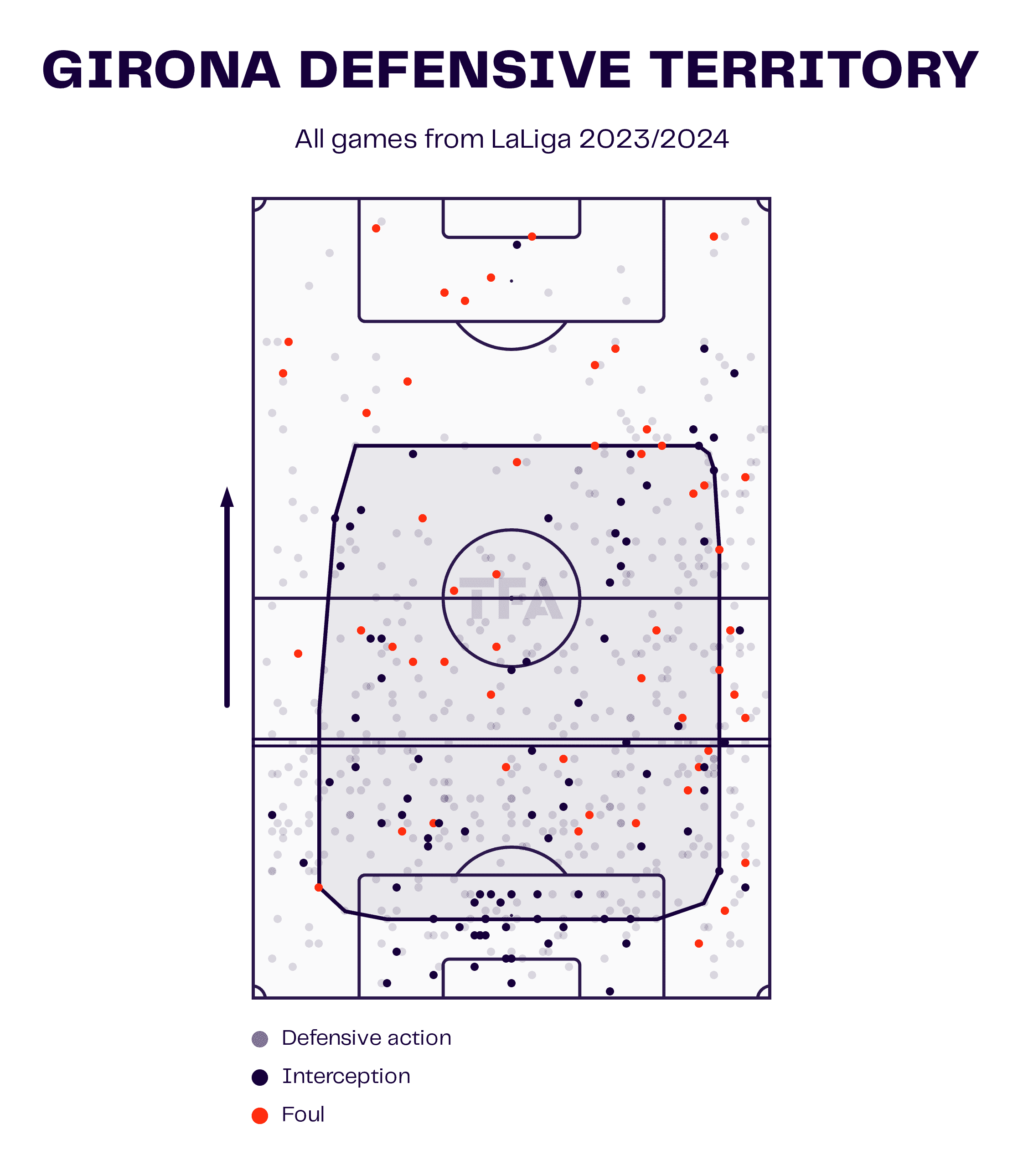
Conclusion
It is still early doors at this point of the season, which can be seen with aspects of Girona’s play both in possession and defensively. However, it is also clear that the squad have a solid foundation at the start of this season, with only a few minor details needing to be ironed out for the side to play to their maximum capabilities. The international break will allow Míchel to reevaluate his side’s performances thus far and make the necessary adjustments and improvements to help his side sustain their form.





Comments